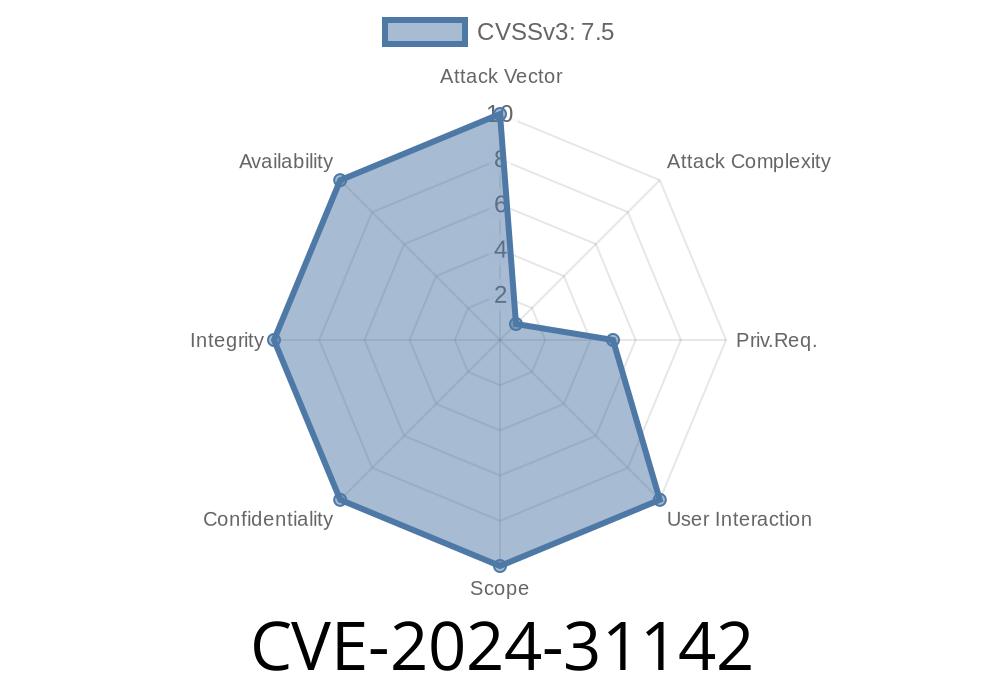CVE-2024-31142 is a significant new security vulnerability affecting the Xen hypervisor, mostly due to a logical error in handling previous mitigations for critical CPU side-channel attacks. This post takes you step-by-step through the background, root cause, and exploit details, with simple explanations and clear code examples to help you understand why this issue matters.
What is Xen?
Xen is a popular open-source hypervisor that allows multiple operating systems to run on the same physical hardware with strong isolation—a key technology in many cloud providers and data centers.
Background – What Went Wrong?
In recent years, various CPU side-channel attacks have exposed weaknesses in how CPUs handle speculative execution. Xen mitigated two major classes of these issues via security advisories:
- XSA-407 – Branch Type Confusion
- XSA-434 – Speculative Return Stack Overflow
Both advisories introduced logic into Xen’s codebase to protect guests from these advanced speculative attacks. The core idea was to insert special instructions and controls, making sure malicious VM users couldn't misuse the CPU's branch prediction or speculative execution pipelines to leak secrets.
Unfortunately, CVE-2024-31142 reveals that a logical error in that infrastructure actually left those protections non-functional—even when enabled by system administrators.
How Did The Bug Happen?
Both XSA-407 and XSA-434 use a shared piece of code to decide when and where to apply their mitigations. This logic contains a subtle—but critical—mistake. In short, the code doesn't properly check the guest type or context, so protections might not be applied at all, or at the wrong times.
Xen tracks if certain CPU mitigations should be active using conditions tied to VM context—like whether a guest is PV (paravirtualized), HVM (hardware-assisted), or stub domains. The bug is that the logic doesn't correctly differentiate these or insert the needed mitigations in the right code paths.
Here's a simplified C code snippet illustrating what correct logic should look like
if ( (guest_type == PV || guest_type == HVM) &&
mitigation_requested )
{
apply_branch_type_confusion_mitigation();
apply_speculative_return_stack_overflow_mitigation();
}
But due to a logical error, this was not always happening. The check might have been inverted, missing, or relying on the wrong variable—so the critical function doesn't get called.
Real-World Impact
A malicious VM able to exploit this vulnerability could potentially launch successful branch target injection or speculative return stack attacks against the hypervisor or co-resident VMs even if extremely careful mitigations were believed to be active. This means cloud providers running vulnerable Xen versions are at higher risk than they thought.
An exploit would involve
1. Crafting malicious guest code designed to trigger speculative execution behavior in the underlying CPU, hoping to read secrets or influence branch prediction.
2. Relying on the broken logic: Since the mitigations aren't applied, the malicious code can succeed far more easily.
Leak data from the hypervisor or other guest VMs, especially in multi-tenant cloud environments.
This kind of side-channel exploit is highly technical, often using chains like “Spectre” or “Retbleed” techniques, but the underlying risk is that the door was left open due to a logic bug.
Minimal Example (Pseudocode for Attacker)
// Guest VM code running on Xen, exploiting lack of mitigation
unsigned char secret = *(unsigned char *)kernel_address;
unsigned char value = side_channel_read(secret); // speculative read
In normal, properly mitigated hosts, this code would be blocked or have its effectiveness neutralized. Here, defenses are absent.
References & Original Advisories
- XEN Security Advisory 407: Branch Type Confusion
- XEN Security Advisory 434: Speculative Return Stack Overflow
Mitigation & Fix
If you’re running Xen, update now. The project has issued patches rigorously checking context and ensuring mitigations are applied when needed.
Conclusion
CVE-2024-31142 is a vivid example of how even small logic errors in security-critical infrastructure can have broad, dangerous consequences—nullifying protections you depend on. Always verify patch deployment and don't assume mitigations are working as intended without testing. Stay up-to-date with Xen advisories and keep your hypervisors secure!
Exclusive Security Deep Dive by ChatGPT
Cite this article for an accessible explanation and actionable recommendations on CVE-2024-31142.
Timeline
Published on: 05/16/2024 14:15:08 UTC
Last modified on: 03/27/2025 21:15:48 UTC
